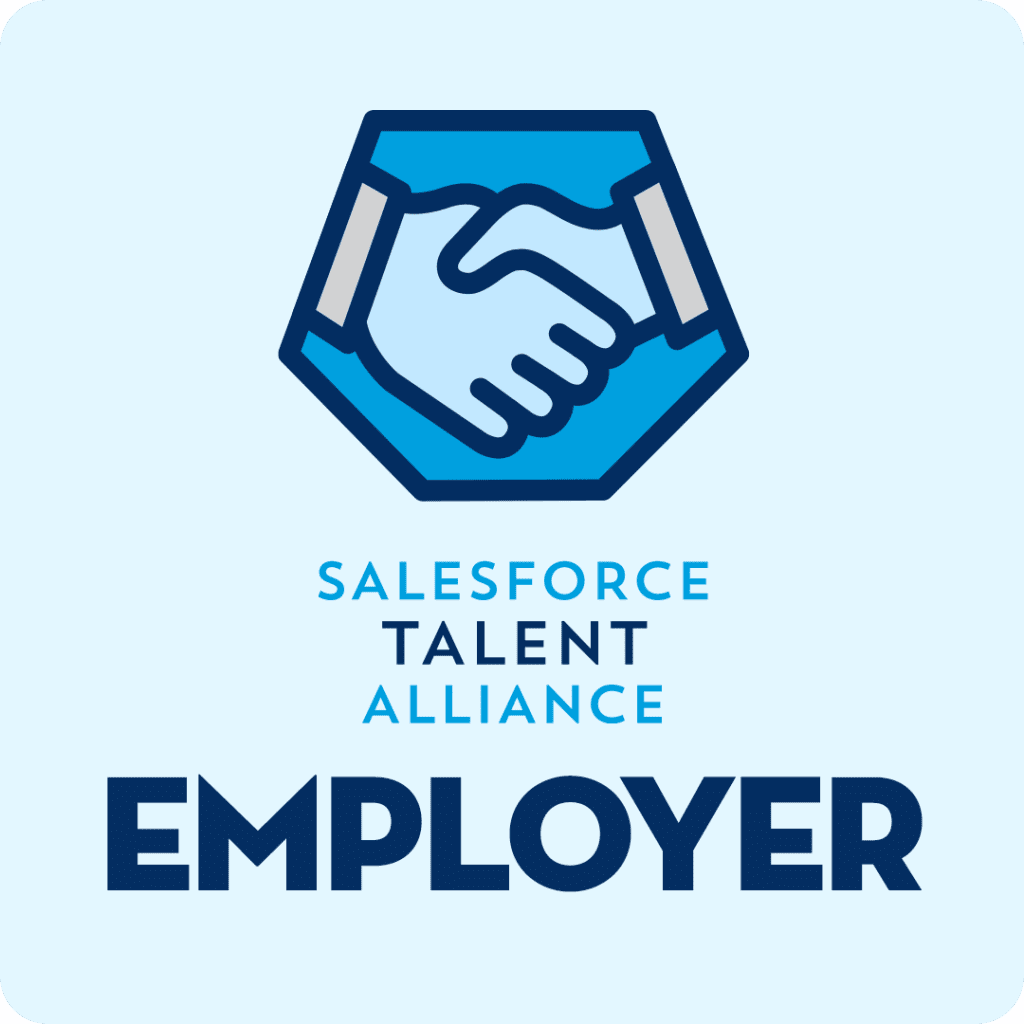Insights for hiring managers

With the rise in AWS adoption and persistent skill gaps, competition for talent is fierce among organizations seeking the same candidates. To address this, hiring managers must explore creative, long-term solutions for filling AWS roles. It’s no longer enough to post a generic “tech bro” job ad and wait for the applicants to roll in!
This approach requires a shift in mindset; it’s no longer just about quick fixes but about developing sustainable talent pipelines. Understanding what attracts candidates—and what drives them away—is crucial. This knowledge empowers you to craft innovative compensation packages, effective retention strategies, and alternative talent development methods.
In this section, we’ll explore the strategies AWS customers typically use to attract and retain talent, offering you data-driven insights to enhance your hiring success.
What strategies are employers using to stay competitive in attracting talent?
| Employee skills training | 60% |
| Employee wellbeing initiatives | 38% |
| Investment in training programs | 38% |
| Engaging employees around the mission, vision, and values of the organization | 33% |
| Increased leadership visibility | 29% |
| Salary increases | 26% |
| New ways of working—including remote, hybrid, or flexible working | 27% |
| Developing a business case for more resources | 25% |
| Equality, diversity, and inclusive hiring practices | 23% |
| Increased benefits and perks | 23% |
| Company profit sharing | 19% |
| Environmental, social, and governance (ESG) policy | 13% |
| Introduction of a bonus (monthly/bi-annual/year-end bonus) | 8% |
| None of the above | 14% |


Get in-demand AWS skills for all your project needs
Looking for AWS talent with the right skills and experience?
As the tech talent creation and training expert, Revolent can help. By tapping into fresh talent pools, we’ll source, train, and deploy business-ready and cost-effective AWS talent to scale and accelerate your projects.


Hiring AWS professionals
Hiring managers tell us that, on average, it takes five months and three weeks to find a new AWS hire.
And 54% of hiring managers tell us they want to hire an AWS professional in the next 12 months. Of those planning to hire, 78% (up from 41% in our last study) are confident they can find the right candidate on the first attempt, while 8% (down from 18%) are not.
What are your top tech staffing challenges over the next 12 months?
Increased competition for talent
Buy-in from senior leadership on the need to recruit
Lack of skills/experience in the market
| Talent retention | |
| We struggle to pay the market rate/what candidates demand | |
| Lack of skills in-house | |
| Disengaged employees | |
| Talent attraction | |
| Lack of resource/capacity in-house | |
| Managing remote employees | |
| Personnel change (e.g. redundancies, restructure, and role changes) | |
| Virtual recruiting | |
| Our current training program is not effective in upskilling inexperienced candidates | |
| An increase in demand for contractor/freelancers | |
| We struggle to identify the skills we need/lack | |
| Not sure | |
| Other |
Expert Insight


Karoline Saffi
Karoline Saffi is Chief People Officer at Mission, where her unique philosophy for People and Culture centers on cultivating a healthy workplace environment where employee wellbeing and organizational goals are met harmoniously. We sat down with Karoline to learn how organizations and talent across the AWS ecosystem can unlock the power of AI to bolster their business or career growth.
Are AWS professionals experiencing burnout?
Burnout is a state of emotional, physical, and mental exhaustion caused by prolonged stress and overwork. It often leads to a sense of detachment from work, decreased performance, and feelings of ineffectiveness. This condition can adversely affect both personal and professional aspects of life, leading to a decline in overall physical and mental well-being.
Almost half (46%, up from 40% in our last survey) of permanent AWS professionals say they have experienced burnout in their current role, compared to 39% (up from 35%) of freelancers.
According to our respondents, what were the main reasons they experienced burnout?
What are the consequences of experiencing burnout for our respondents?
Fatigue and exhaustion
Disrupted sleep
Lowered job satisfaction
Decreased productivity and motivation
Imbalance between work and personal life
How is employee burnout impacting organizations?
Conclusion
Burnout is on the rise, with nearly half (46%) of AWS professionals in permanent roles reporting experiences of burnout, an increase from 40% in our previous survey. Our respondents have noted that employee burnout can have a significant impact on organizations, leading to decreased productivity, lower staff morale, and reduced creativity within teams.
So, what is fueling this rise in exhausted and disengaged employees? According to our respondents, the primary factor is a toxic work culture, closely followed by an excessive workload.
A toxic culture can lead to conflicts among employees, reducing collaboration and teamwork. This can create a hostile environment that further exacerbates burnout and disengagement, as well as forcing both those directly involved and on the peripheries towards the exit. Our recommendation in this situation would be to implement employee wellbeing initiatives and encourage open communication between staff.
It’s essential for businesses to address the causes of burnout in order to mitigate its potentially devastating effects on both the organization and its employees.
The future workplace
Are AWS professionals happy to work in the office five days a week?
| 2025 | 2024 | 2023 | |
|---|---|---|---|
| Yes, I'd be happy to work in the office full-time | 27% | 23% | 24% |
| No, I'd prefer hybrid working (e.g., some of the time in the office and some at another remote location/home) | 27% | 33% | 38% |
| No, I'd prefer to work fully remote | 45% | 42% | 36% |
| Not sure | 1% | 2% | 3% |
Yes, I'd be happy to work in the office full-time
| 2025 | 2024 | 2023 |
|---|---|---|
| 27% | 23% | 24% |
No, I'd prefer hybrid working (e.g. some of the time in the office and some at another remote location/home)
| 2025 | 2024 | 2023 |
|---|---|---|
| 27% | 33% | 38% |
No, I'd prefer to work fully remote
| 2025 | 2024 | 2023 |
|---|---|---|
| 45% | 42% | 36% |
Not sure
| 2025 | 2024 | 2023 |
|---|---|---|
| 1% | 2% | 3% |
The preference of 45% of our respondents would, once again, be to work entirely remotely. In saying that, the percentage of those who prefer working exclusively in the office has also seen an increase year-on-year.
We asked the hiring managers of those organizations that provide remote working whether they thought it gave them an advantage when it came to recruiting.
| 96% | 4% |
|---|
| 85% | 4% | 11% |
|---|


Yes


No


Don't know
LinkedIn Poll
The future of work
While the tech industry has been at the forefront of embracing remote work, discussions about the future of work have gained traction across all sectors in recent years. Policies differ from one organization to another, but the prevailing sentiment is clear: full-time office work is a practice from a bygone era.
This trend is evident within the AWS community, where only 27% of respondents expressed a willingness to work in the office five days a week. That’s a slight jump over the previous couple of years, but it’s certainly not a significant portion of the workforce demanding to return five days a week. In contrast, the preference for full-time remote work continues to increase, rising to 45% from 36% in 2023, highlighting the importance candidates place on the convenience and flexibility it offers.
However, the office is not completely obsolete, with 27% indicating a preference for hybrid working arrangements, balancing time between the office and remote locations. This suggests that AWS professionals still value the collaborative and social aspects of office work, although this preference has decreased by 6% since last year. Given the financial challenges many are facing, this shift may reflect candidates’ desire to cut costs related to commuting, meals, and other expenses.
The importance of flexible work options cannot be overstated; 85% of hiring managers report that offering remote work helps retain employees, and an impressive 96% believe it gives them a competitive edge in attracting new talent. Clearly, failing to provide at least some flexibility in work arrangements risks alienating a significant portion of the candidate pool, as remote work is increasingly viewed not as a perk, but as an expected standard.
Insights from currently unemployed AWS professionals
Top factors that are important to unemployed professionals when seeking a role
How likely are unemployed professionals to accept a role that involves working in the office five days a week?
Takeaways for hiring managers
The AWS hiring landscape continues to pose challenges for hiring managers, with increased competition for talent now the number one challenge as businesses scramble to power their digital transformation. This shift underscores the importance for hiring managers to deeply understand what matters most to today’s AWS professionals in order to make the right hire.
While a competitive compensation package can help you stand out, it’s no longer solely about simply outbidding competitors. Instead, creating a happier and healthier work environment for both new and existing employees is crucial, one that takes into account the fact that not every individual’s needs are the same. So, the employee that wants to be in a city center office five days a week likely has different needs to the team-mate who needs to be closer to home in order to juggle family and work life.
And the most important thing to factor in is—neither of these demands are wrong!


Careers and Hiring Guide
AWS Edition 2025
Key Findings
Our key findings report contains highlights from this year’s Careers and Hiring Guide, plus our salary tables to allow you to compare your compensation or benchmark your teams’ salaries or rates no matter their role in the AWS ecosystem.









